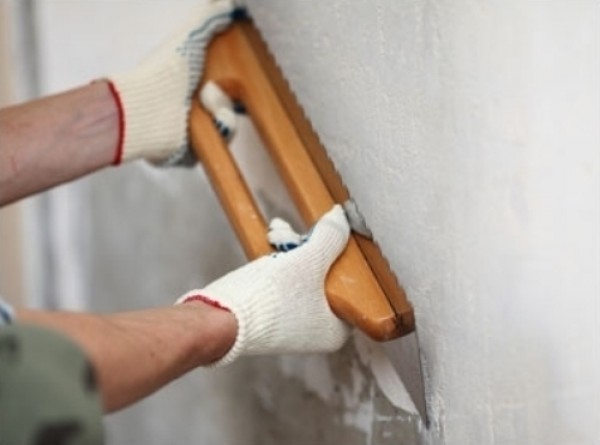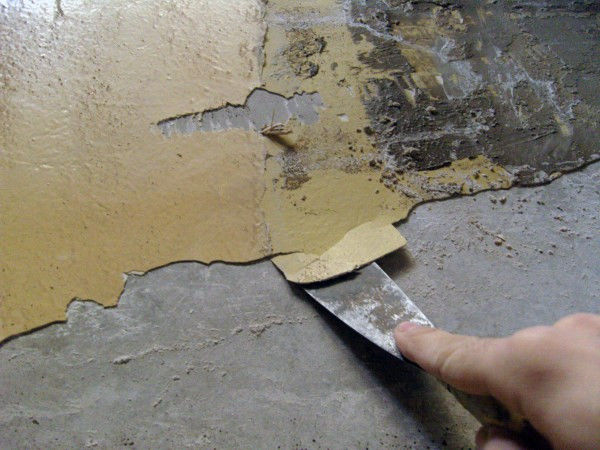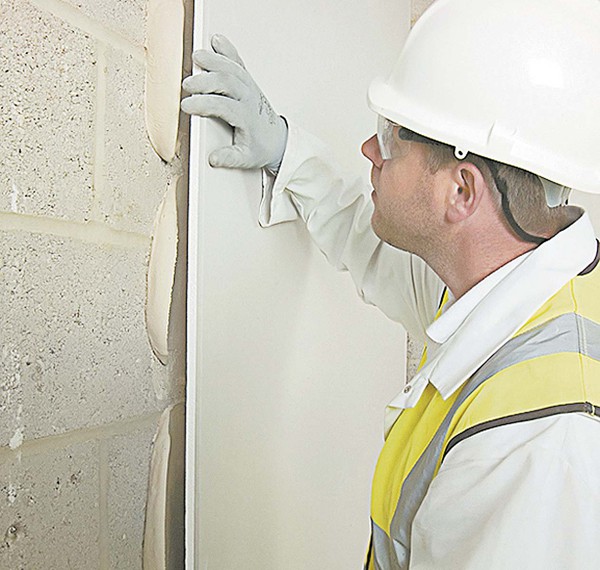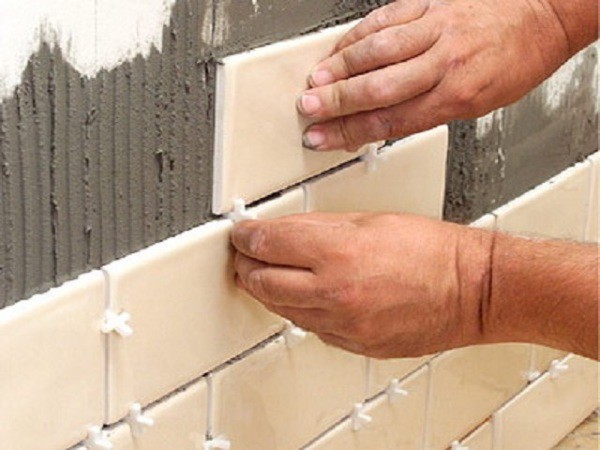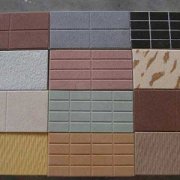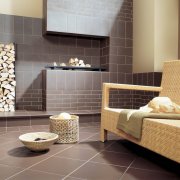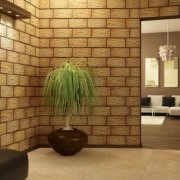Is it possible to put tiles on putty and how to do it right
Facing tiles are quite expensive material. As a rule, it is used to decorate walls for a long time, unlike paint or wallpaper, which can be changed more often and at lower cost.
Therefore, throughout the entire period of operation, it must firmly adhere to the surface. Naturally, before the start of work, many people have a question: how to properly prepare the base, is it necessary to putty the walls before laying the tiles, or can they be smoothed with tile glue in the process of lining?
The content of the article
Preparing walls for tiling
The base on which the tile will be glued must be properly prepared for such a finish.
As a result of this work, it should acquire:
- Strength and stability. Walls that crumble, get wet, and are subject to cracking will not be able to reliably hold a heavy coating on themselves - over time it will begin to fall off.
- Good adhesion. The surface should provide reliable adhesion to the tile adhesive.
- Flat vertical surface without major defects. It’s not easy to lay exactly the tiles with your own hands on a curved base, and if you repeat all the bends, the coating will not look aesthetically pleasing. In addition, it will not last long on an uneven plane.
In a word, non-compliance with the technology will lead to the fact that the finish result will not please you with its appearance, and soon you may suffer losses due to the need to shift the tiles.
Note. It is no longer possible to lay the used material in high quality again, and the price of the new one is such that it is easier and cheaper to immediately prepare the walls in accordance with technological requirements.
You can do this in different ways, for example, level them with plaster or sheathe with drywall (see Facing walls with drywall: do it sequentially) Both methods are used in cases where thorough alignment is required with the elimination of large defects and level differences.
If the walls are fairly even, minor flaws are completely eliminated by puttying. But is it possible to glue tiles on putty?
How and what to putty on walls under a tile
The answer to the previous question is as follows: it is possible, but the leveling mixture must have certain characteristics and be applied in strict accordance with building codes and requirements.
The choice of putty
The selection criteria for the leveling mixture are its moisture resistance, adhesion indicators, the required layer thickness, as well as the weight of the tile:
- Moisture resistance. Gypsum puttythat does not have this property can only be used in dry, heated rooms with constant humidity. In the bathroom or in the kitchen, it will absorb water vapor and swell. In such rooms it is better to use cement-based putty.
Tip. It is better not to use gypsum putty under the tile, since in the process of facing it will draw water from the glue, worsening its properties. But you can glue gypsum tiles onto it on liquid nails or polymer glue.
- Putty should stick well to the wall and not degrade its performance. For example, for walls from gas silicate blocks or foam concrete, special mixtures are produced on a silicate, silicone, lime-cement base.
- The scope of the putty also matters - for indoor or outdoor use (see Putty for exterior work - affordable material for the decoration of facades) When facing external walls with tiles, the instruction requires the use of frost-resistant compounds.
- The type of putty is selected depending on the degree of unevenness of the walls.. Differences of up to 2 cm are leveled only by starting mixtures having a coarse-grained structure, and small defects and deviations from the level can be corrected with the help of finishing or universal putty.
It is important. If the wall plane requires “stretching” to a level with a layer of more than 2 cm, this should be done with plaster, since a thick layer of putty may not support the weight of the tile.
How to determine the layer thickness
To decide whether it is necessary to putty the walls under the tile, it is necessary to assess the condition of the surface and, first of all, its evenness:
- If it is strong, with minor differences and defects, putty can be abandoned altogether, limited to a primer;
- If there are small irregularities, determining their size and the required thickness of the leveling layer will allow you to calculate the required amount of material;
- If the differences are more than 2 cm, it does not make sense to putty, it is better to think about plastering or leveling the walls with drywall in a frame or frameless way - with glue.
Note. In the latter case, puttying is nevertheless required - to seal the joints between the sheets of drywall. It is selected in accordance with the above criteria.
To find out what layer of putty is required to level the wall, you can use a long building level or plumb. To do this, find the most protruding point on the surface and take measurements relative to it.
Plumb lines are hung at the corners of the walls and along the line of the maximum protrusion. Accuracy is checked by pulling the diagonally.
The evenness of the walls can also be determined using other devices, for example, a laser level.
How to putty properly
The preparation of the walls for tiling begins with the cleaning of the surface from dust and dirt and the repair of large cracks, chips and other defects with building foam or plaster.
After this, the surface must be primed (see Primer before puttying walls - is it needed) The primer will strengthen it, provide better adhesion to the putty, and also protect against the appearance of fungus and mold (if there is a risk of their occurrence, choose a primer with antiseptic additives).
After the primer dries, putty is applied. It should be remembered that its layer should not exceed 5 mm. If greater thickness is required, make several layers, each time priming the previous one after it dries.
You can not achieve perfect evenness, as in the preparation of surfaces for wallpaper or painting - small flaws are easily fixed with tile glue in the process of lining. For the same reason, grouting and polishing of the walls is not required. On the contrary, after final alignment, they need to be made notches for better adhesion of the tile to the base.
But is it possible to put tiles on the putty immediately after its application?
No you can not. It is necessary to wait for the drying of the last layer and again treat it with a deep penetration primer.
And immediately before facing, make sure that there are no voids under the putty and that it holds well on the wall. To do this, it is tapped with a rubber mallet - the sound everywhere should be the same.
Conclusion
Only strictly observing the technology and choosing all the materials correctly can you be sure that the tile will stay on the putty wall for a long time and reliably, delighting with its beauty and neat laying.
If you have any questions or doubts, watch the video in this article and get additional information on the topic. But in such a serious matter, it is better to trust specialists, especially if you have absolutely no experience.
